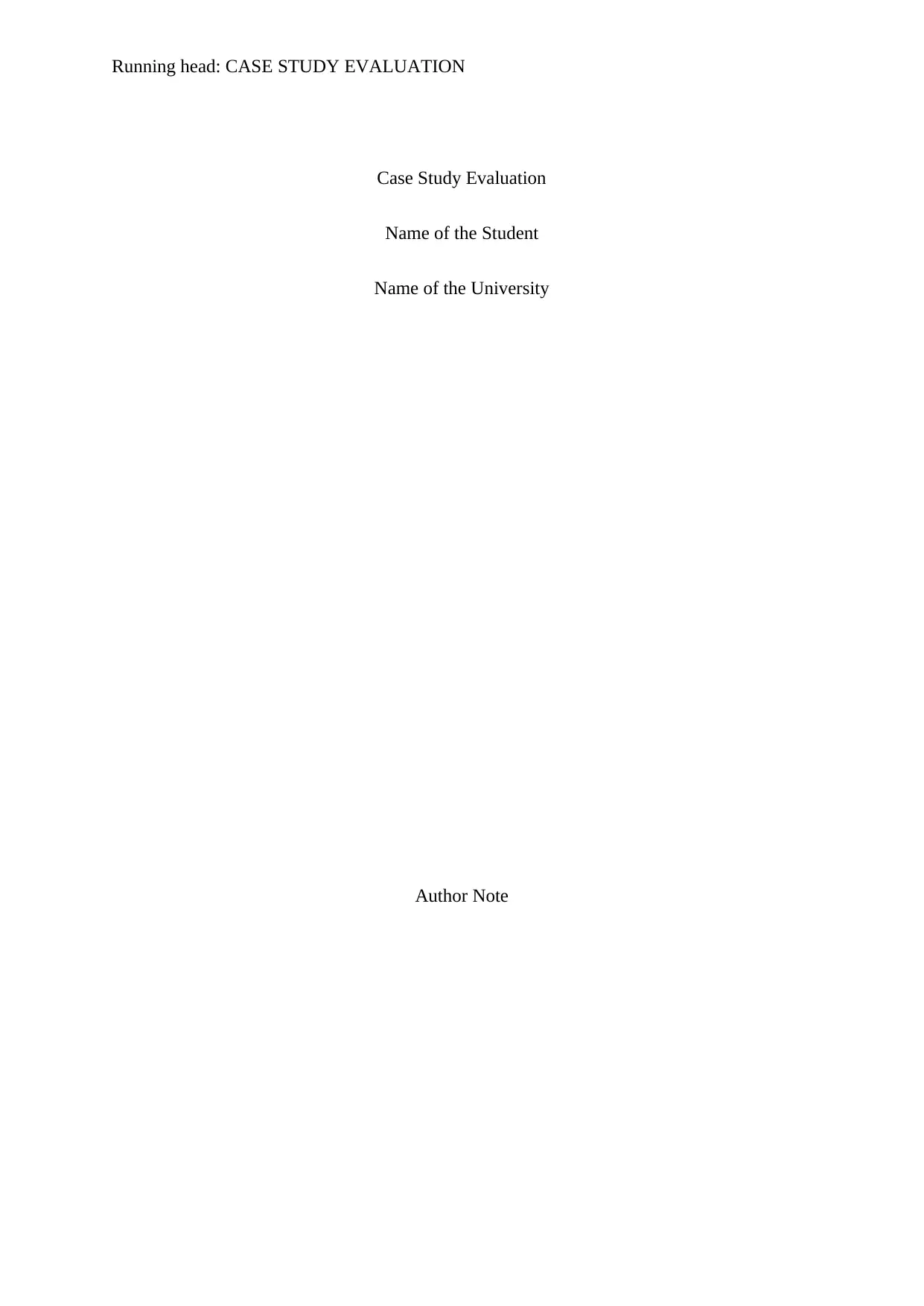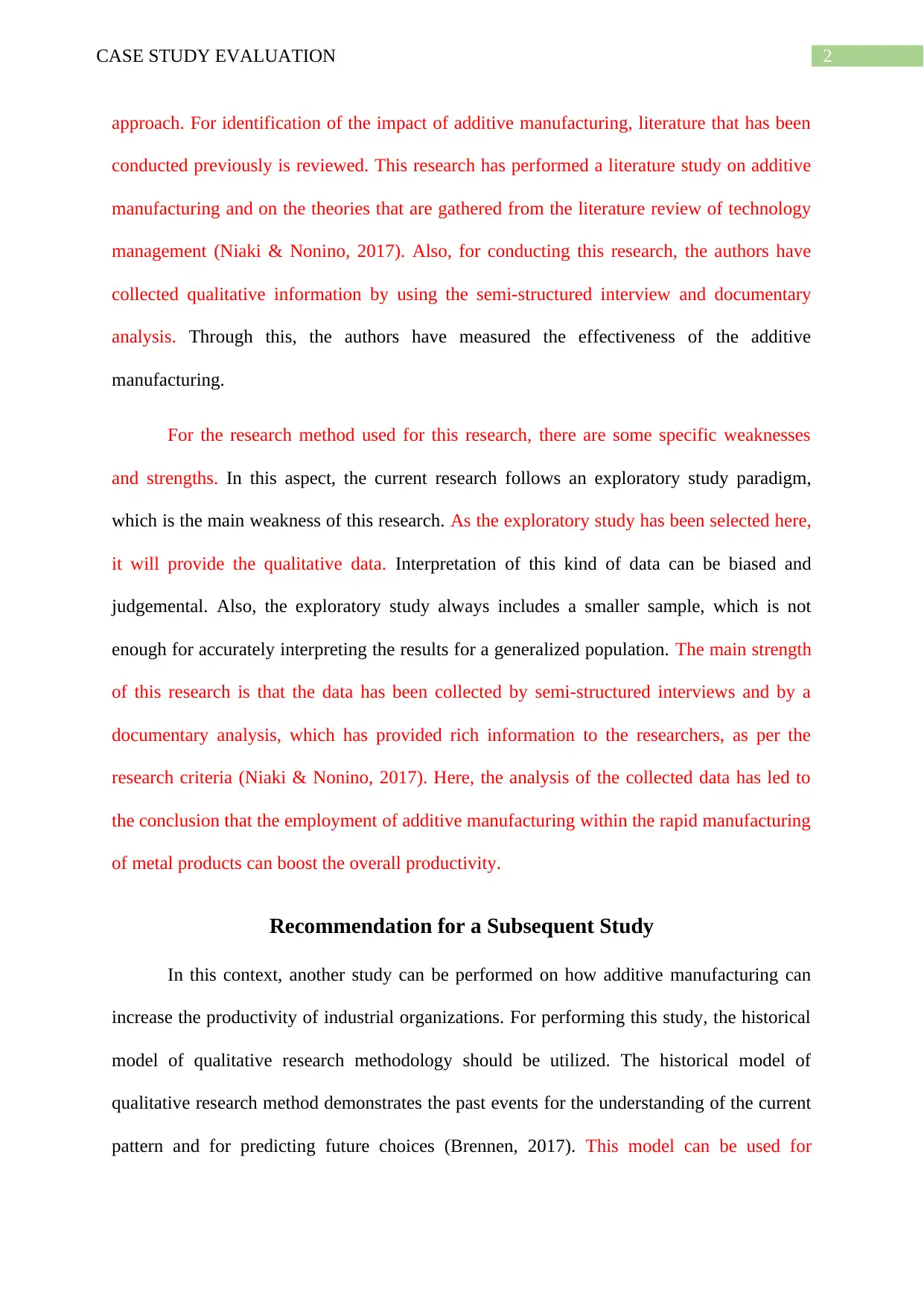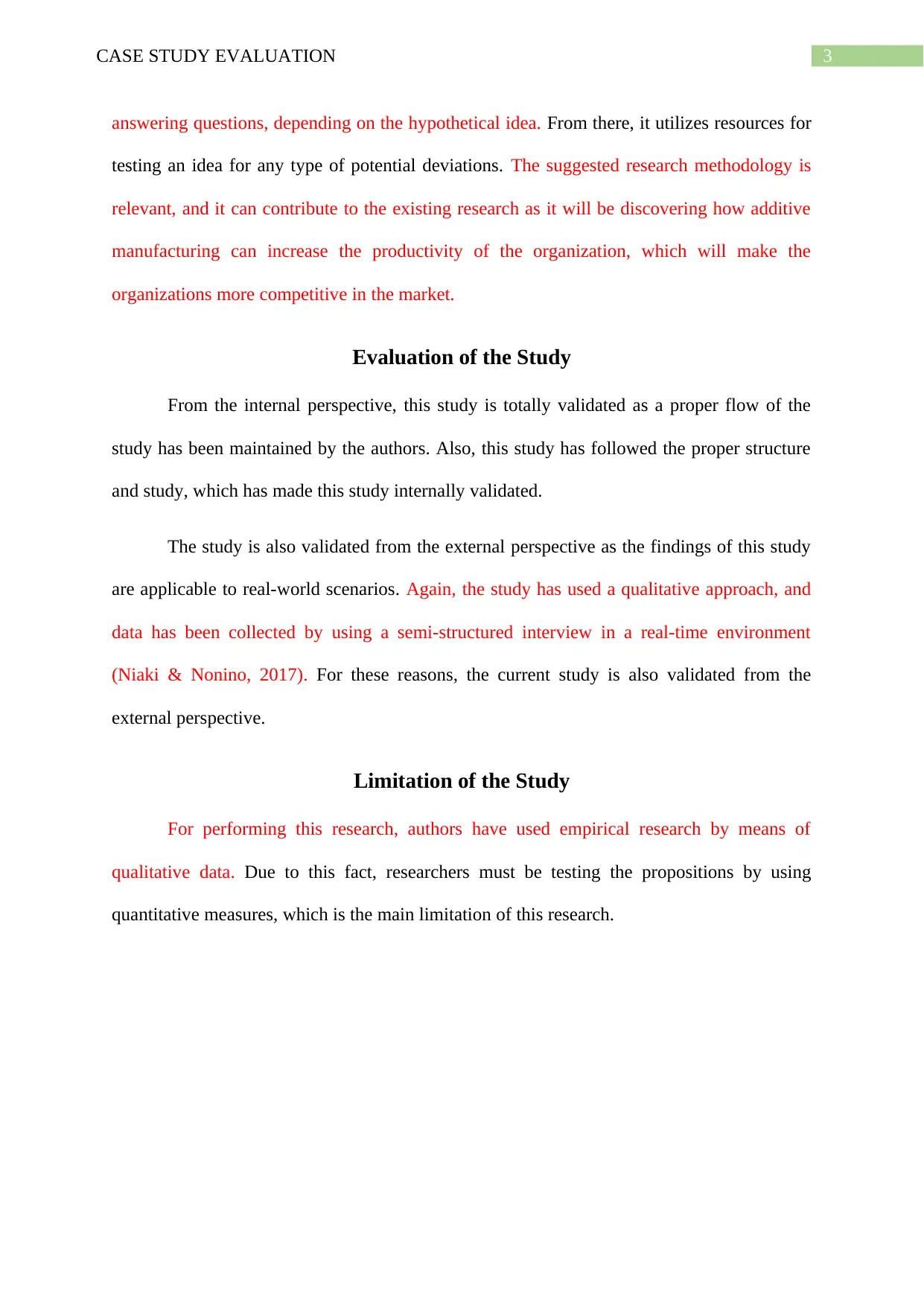Case Study Analysis: Additive Manufacturing's Impact on Business
VerifiedAdded on 2022/08/16
|5
|967
|91
Case Study
AI Summary
This case study evaluates the impact of additive manufacturing on business competitiveness, focusing on an exploratory study using multiple case studies across 16 organizations. The research examines how additive manufacturing influences business performance, strategies, and contingent factors. The methodology includes literature reviews, qualitative data collection via semi-structured interviews, and documentary analysis. The study highlights the potential of additive manufacturing to boost productivity, particularly in the rapid manufacturing of metal products. The analysis identifies the strengths of rich data from interviews and documents, but also acknowledges the limitations of an exploratory approach and a small sample size. The study concludes that additive manufacturing can significantly increase productivity, and suggests further research using historical qualitative methods. The study is validated internally and externally, with real-world applicability. The main limitation is the lack of quantitative measures to test propositions, which is something a subsequent study can address.
1 out of 5












![[object Object]](/_next/static/media/star-bottom.7253800d.svg)